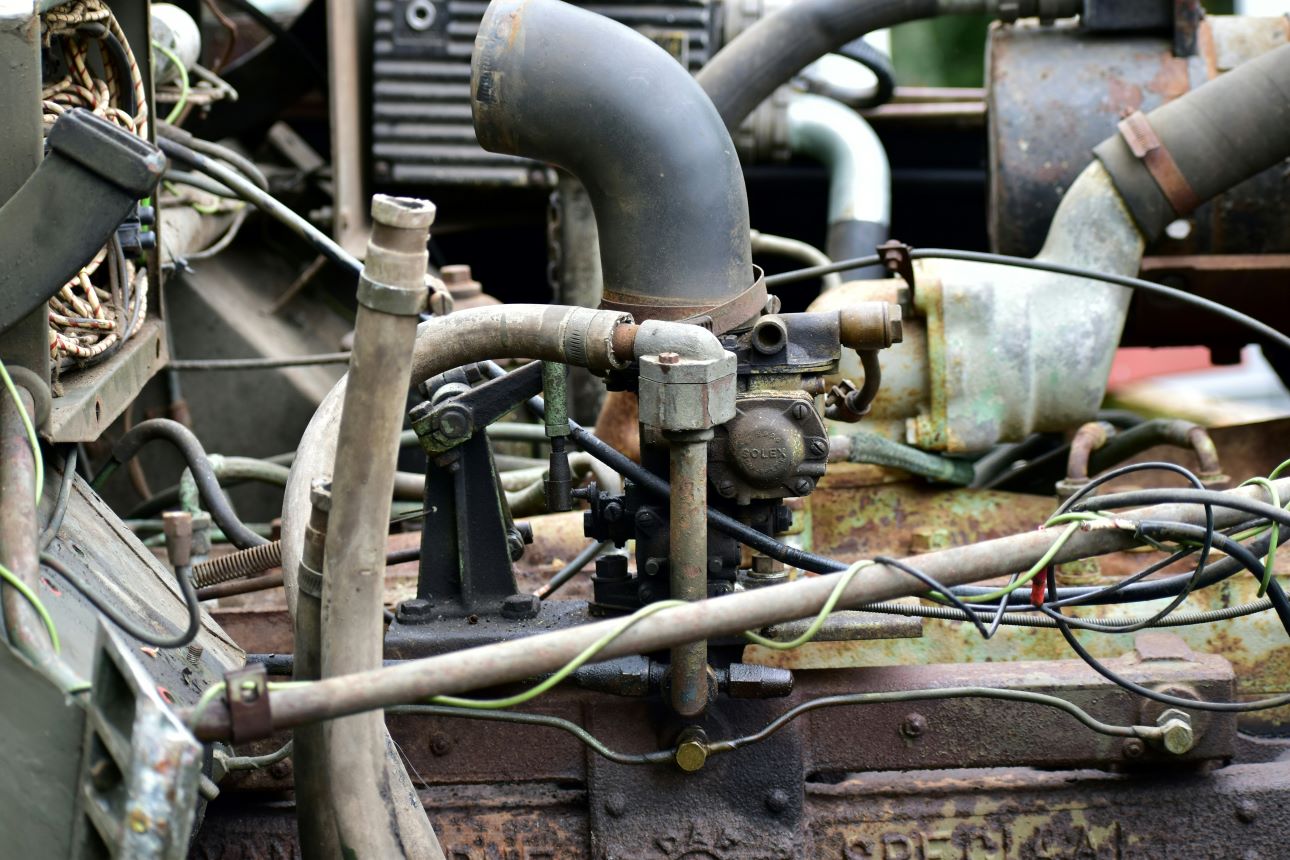Owning a truck in Hamilton comes with the responsibility of maintaining its optimal performance and longevity. This involves regular care and attention to its various components, collectively known as truck parts.
Truck parts play a crucial role in the overall functionality, safety, and efficiency of your vehicle.
This comprehensive guide aims to provide new truck owners in Hamilton with a thorough understanding of essential truck parts.
It will explore different types of parts, their functions, and the importance of maintaining them in good condition.
Whether you’re a seasoned driver or a recent truck owner, this guide will equip you with the knowledge needed to make informed decisions about your truck’s care.
Engine Parts: The Heart of Your Truck
The engine is the powerhouse of your truck, and its components are crucial to its performance and longevity.
- Spark Plugs: These tiny components ignite the fuel-air mixture in the engine’s cylinders, creating the combustion that drives the truck forward. Think of them as the spark that starts a fire. If they’re worn or damaged, the engine won’t run efficiently, and you might experience misfires or decreased power.
- Filters: Air, oil, and fuel filters keep contaminants out of your engine, preventing damage and ensuring optimal performance. A clogged air filter can reduce airflow, leading to decreased power and fuel efficiency. Dirty oil and fuel filters can clog the engine’s internal passages, causing wear and tear.
- Belts and Hoses: These components drive various engine accessories, such as the alternator and water pump. Inspect them regularly for signs of wear or damage, as a broken belt or hose can lead to engine failure. A damaged belt might cause the engine to overheat or prevent the battery from charging.
- Cooling System Components: The cooling system keeps your engine from overheating, ensuring its longevity and preventing costly repairs. Components like the radiator, thermostat, water pump, and hoses work together to circulate coolant and dissipate heat. A faulty radiator or thermostat can cause the engine to overheat, leading to engine damage.
- Engine Oil: Oil lubricates the engine’s moving parts, reducing friction and wear. Regular oil changes are essential to maintain engine health and prevent premature failure. Using the wrong type of oil or failing to change it regularly can lead to engine damage.
Transmission Parts: Shifting Gears Smoothly
The transmission is responsible for transferring power from the engine to the wheels.
- Transmission Fluid: This vital fluid lubricates and cools the transmission components, ensuring smooth shifting and preventing overheating. Think of it as the lifeblood of your transmission. Regular fluid changes are necessary to maintain proper transmission performance. Using the wrong type of fluid or failing to change it regularly can lead to transmission problems.
- Torque Converter: This hydraulic coupling transfers power from the engine to the transmission, allowing for a smooth start and gradual acceleration. It’s essentially a fluid-filled clutch that allows for a smooth transition between gears.
- Gearbox: The gearbox contains the gears that determine the truck’s speed and direction. Regular inspection and maintenance are essential to prevent gear damage and ensure proper shifting. A damaged gearbox can cause the truck to shift harshly or refuse to shift into certain gears.
- Clutch (if applicable): In manual transmission trucks, the clutch disengages the engine from the transmission, allowing for shifting. Proper clutch use and maintenance are crucial to prevent premature wear. A worn-out clutch can cause slipping or difficulty shifting gears.
Suspension Parts: A Smooth Ride
The suspension system absorbs shocks and vibrations, providing a comfortable ride and maintaining stability.
- Shocks and Struts: These components dampen the impact of bumps and irregularities in the road, ensuring a smooth ride and preventing excessive body roll. Think of them as the shock absorbers for your truck. Worn shocks or struts can lead to a rough ride, poor handling, and premature tire wear.
- Springs: Springs support the weight of the truck and help maintain proper ride height. They can wear out over time, affecting the truck’s handling and comfort. Worn springs can cause the truck to sag or bounce excessively.
- Control Arms: These components connect the wheels to the frame, providing lateral stability and controlling wheel alignment. Damaged control arms can affect the truck’s steering and handling, and can even cause the wheels to misalign.
- Ball Joints: Ball joints allow for articulation between the control arms and the steering knuckle, ensuring proper wheel movement. Worn ball joints can cause excessive steering play, noise, and uneven tire wear.
- Stabiliser Bars: These components help reduce body roll during cornering, improving handling and stability. Worn stabiliser bars can cause excessive body roll, making the truck feel less stable and more prone to tipping over in corners.
Brake Parts: Stopping Safely
The braking system is essential for stopping your truck safely.
- Brake Pads: These friction materials slow down the wheels when you apply the brakes. They wear out over time and need to be replaced regularly to ensure effective braking. Worn brake pads can cause reduced braking performance and increased stopping distances.
- Brake Shoes: In some trucks, brake shoes are used instead of pads. They work in conjunction with brake drums to provide stopping power.
- Brake Rotors: These discs are mounted to the wheels and provide a surface for the brake pads or shoes to rub against. They can warp or wear out over time and may need to be replaced. Warped rotors can cause the brakes to pulsate or vibrate when applied.
- Brake Drums: In drum brake systems, brake shoes expand against a drum, creating friction to slow down the wheels.
- Brake Callipers: These components hold the brake pads or shoes in place and apply pressure to them when the brakes are applied. Damaged callipers can cause uneven brake wear or brake failure.
- Brake Fluid: Brake fluid transmits hydraulic pressure from the master cylinder to the callipers or wheel cylinders, activating the brakes. It absorbs moisture over time and needs to be replaced regularly to maintain proper braking performance. Contaminated brake fluid can cause the brakes to feel spongy or fail to stop the truck effectively.
Electrical Parts: Powering Your Truck
Electrical components power various systems in your truck.
- Battery: The battery stores electrical energy and supplies power to the truck’s electrical systems when the engine is off. A weak or dead battery can prevent the truck from starting or cause electrical problems.
- Alternator: The alternator generates electricity to recharge the battery and power the truck’s electrical systems while the engine is running. A faulty alternator can cause the battery to drain or prevent the truck from starting.
- Starter: The starter motor cranks the engine to start it. A faulty starter can prevent the truck from starting.
- Wiring Harness: The wiring harness connects all the electrical components in the truck, transmitting power and signals. Damaged wiring can cause electrical problems, such as lights not working or electrical shorts.
- Headlights, Taillights, Turn Signals: These lights provide visibility and safety. Faulty lights can compromise your safety and visibility on the road.
- Other Electrical Components: Many other electrical components, such as radios, air conditioning, and power windows, rely on the truck’s electrical system. Damaged electrical components can cause various malfunctions and inconveniences.
Exhaust Parts: Managing Emissions
The exhaust system channels exhaust gases away from the engine.
- Exhaust Manifold: This component collects exhaust gases from the engine cylinders and directs them into the exhaust system. A cracked or damaged exhaust manifold can cause exhaust leaks, reduced power, and noise.
- Catalytic Converter: The catalytic converter reduces harmful emissions by chemically converting them into less harmful substances. A damaged catalytic converter can cause reduced engine performance, increased fuel consumption, and engine misfires.
- Muffler: The muffler reduces noise levels by absorbing sound waves. A damaged or worn-out muffler can cause excessive noise.
- Tailpipe: The tailpipe is the final part of the exhaust system, discharging exhaust gases into the atmosphere. A damaged or rusted tailpipe can cause exhaust leaks and noise.
Tires: The Foundation of Your Truck
Tires are the contact point between the truck and the road.
- Tire Size and Type: The size and type of tires are determined by the truck’s specifications and intended use. Using the wrong size or type of tires can affect the truck’s handling, ride quality, and fuel efficiency.
- Tire Pressure: Proper tire pressure is essential for optimal performance, fuel efficiency, and tire life. Underinflated tires can cause premature wear, reduced fuel efficiency, and poor handling. Overinflated tires can reduce traction and increase the risk of a blowout.
- Tread Depth: The tread depth provides traction and helps prevent hydroplaning. Tires with insufficient tread depth can compromise your safety, especially in wet or snowy conditions.
- Tire Rotation: Regular tire rotation helps ensure even wear and prolong tire life. Uneven tire wear can affect the truck’s handling and reduce tire life.

Cab Parts: Your Driver’s Workspace
The cab is the driver’s workspace.
- Seats: Comfortable seats are essential for long drives. Worn or damaged seats can cause discomfort and fatigue.
- Windows: Windows provide visibility and ventilation. Cracked or damaged windows can affect visibility and safety.
- Doors: Doors provide access to the cab and protect passengers from the elements. Damaged doors can compromise safety and security.
- Dashboard: The dashboard houses the instrument cluster, controls, and other components. A damaged dashboard can affect the driver’s visibility and access to controls.
- Gauges: Gauges display information such as speed, engine RPM, fuel level, and temperature. Faulty gauges can provide inaccurate information and compromise safety.
- Controls: Controls allow the driver to operate various functions, such as lights, wipers, and audio systems. Damaged or malfunctioning controls can affect the truck’s operation and safety.
Bed Parts: Hauling Cargo
The bed is used for hauling cargo.
- Bed Liner: A bed liner protects the bed from scratches and damage. A damaged bed liner can expose the bed to rust and corrosion.
- Bed Rails: Bed rails provide additional support for cargo and help secure it in place. Damaged bed rails can compromise the safety of your cargo.
- Tie-Down Points: Tie-down points are used to secure cargo to the bed. Damaged tie-down points can
Prioritising Truck Part Maintenance
Understanding truck parts and their importance is crucial for any new truck owner. By investing time and effort into maintaining your truck’s components, you can significantly enhance its performance, safety, and longevity.
Key Takeaways
- Regularly inspect and maintain all truck parts according to the manufacturer’s recommendations.
- Address any issues promptly to prevent further damage and costly repairs.
- Utilise the resources available in Hamilton, including local suppliers, online platforms, and truck manuals.
A Well-Maintained Truck is a Happy Truck
By following the guidelines in this comprehensive guide, you can ensure that your truck operates at its best for many years to come. A well-maintained truck not only provides reliable transportation but also brings joy and satisfaction to its owner.
